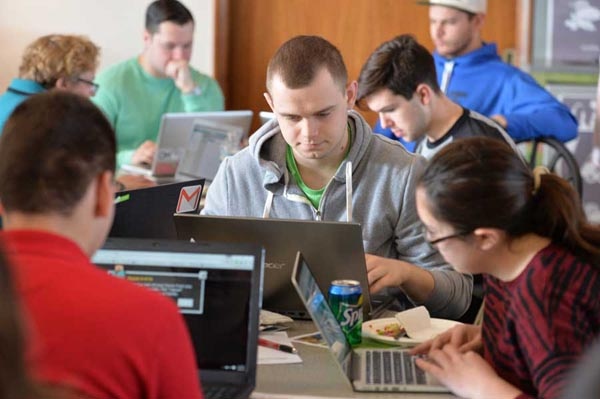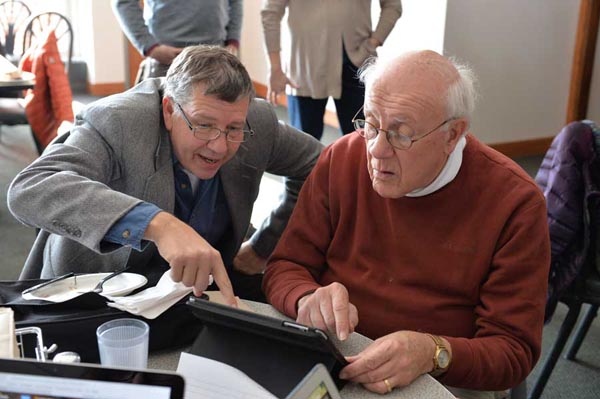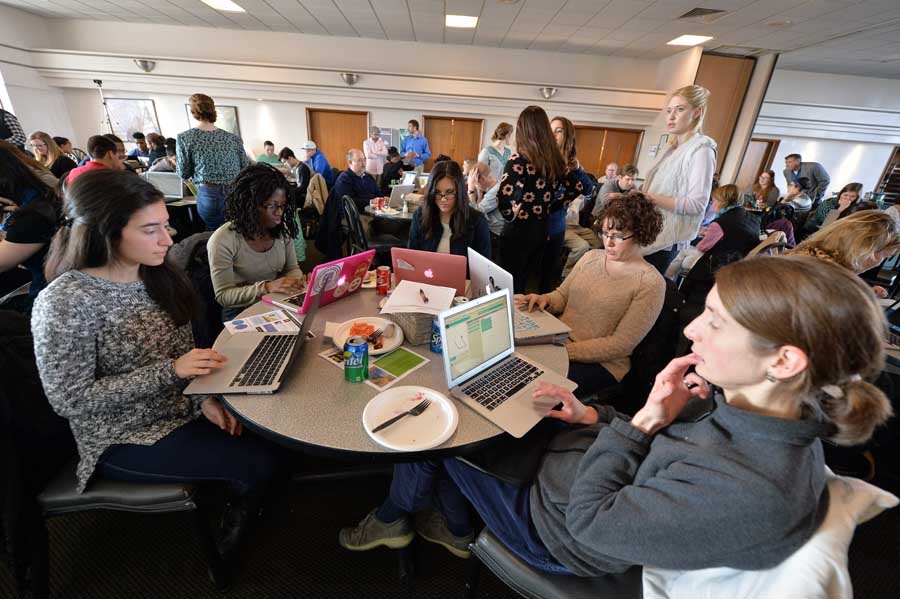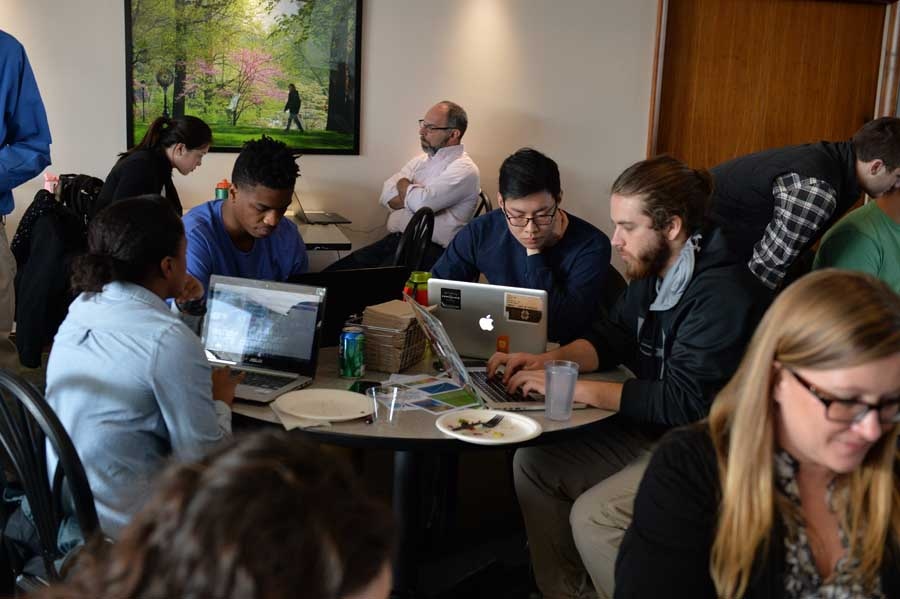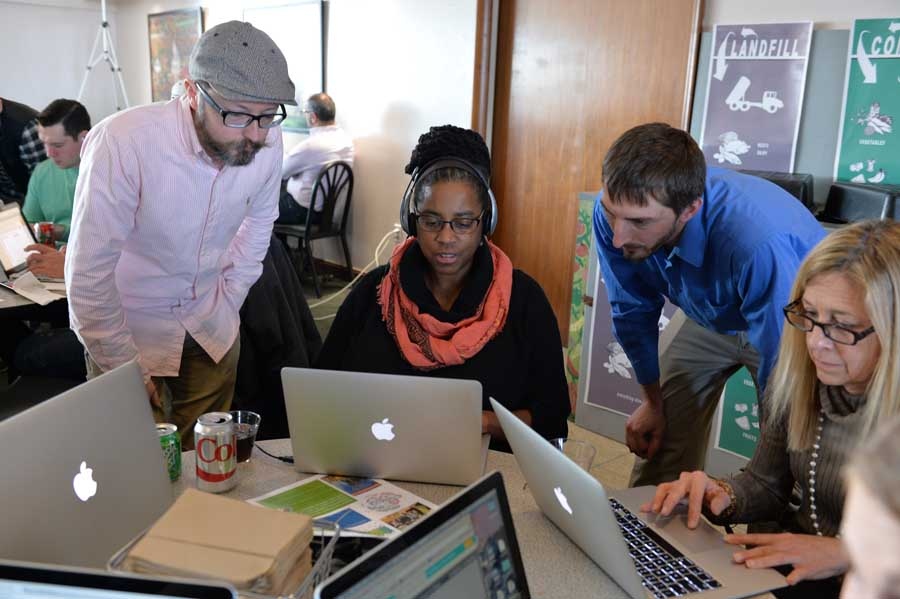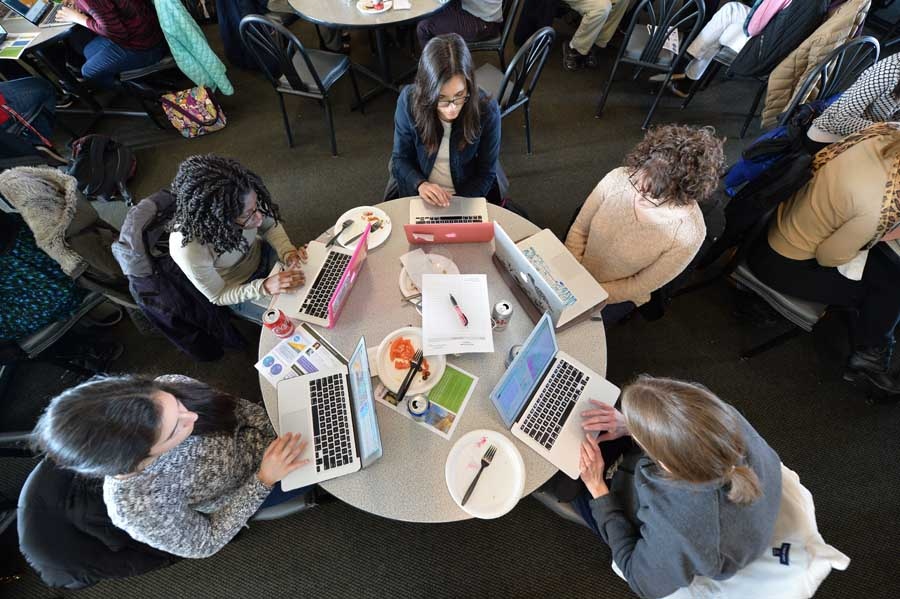All across the Curtis veggie lounge, students, staff, and faculty gathered together around tables, hunched over each others’ screens, working on the problem posed by their computers. Over the ambient sound of mouse clicks, key taps and conversation, you could hear the Star Wars’ theme song sporadically bubble out of someone’s unmuted speaker.
It was Denison’s first “Hour of Code” and more than 100 people gathered to learn the basic ideas behind writing computer code through interactive games with themes like Minecraft and, yes, even Star Wars.
The event was a part of a larger, international movement by Code.org to simplify the world of computer science, emphasize its importance in the coming years, and recruit young people, including prospective female coders, to develop an interest in the field. A term like “code” can send those less tech-savvy minds away in confusion, but really, programmers and coders want to clear the air when it comes to coding—a language that allows a mere human to tell a computer what to do, and step by step, someone who knows the language can create apps, websites, even games.
As President Barack Obama said in a promotional Code.org video shown before the Denison event, “Don’t just play on your phone, program it.” Joined by the likes of Mark Zuckerberg, Bill Gates, Shakira, and Ashton Kutcher among many other recognizable faces, the president and video demonstrated the growing importance of debunking the (mis)perceptions of what computer science actually means, and teaching its skills at the national level.
Addressing the room, Denison President Adam Weinberg emphasized these sentiments as well, highlighting the role that campus offices and departments, like career exploration and computer science, will play in supporting students entering a world where everyday life (and jobs) depend on technology.
“We’re trying to do more to help students connect liberal arts training with some of the big, pressing issues that your generation is going to inherit post-Denison,” Weinberg explained. “Understanding coding and demystifying it are going to be really important. So, events like these are an extension of the liberal arts education that you’re getting at Denison.”
And the variety of ages and occupations in that room proved that interest in this type of information is not only important to students at Denison, but also to staff and faculty.
On the other side of the spectrum, the computer science department is also partnering with The Works: Ohio Center for History, Art & Technology (located in Newark, Ohio) to educate the next generation about the importance and accessibility of computer science.
In December, for instance, they hosted an “Hour of Code” for elementary students in Licking County. As he did at last week’s event, Computer Science Professor Tom Bressoud introduced the concept, answered questions, and then monitored the room with a handful of computer science students while roughly 20 grade-schoolers and their parents worked through the programs.
“I’m an educator. And I am in a field where students coming into college have little or no experience to help them understand what computer science is all about. And so, whether it is with my own students, with prospective students with parents, or with members of the community, it is always my job to help people to understand,” says Bressoud, who has been quarterbacking the “Hour of Code” efforts at Denison.
And, while there is still a long way to go until computer science feels more accessible to the public, the “Hour of Code” events hosted for Licking County’s youth and for Denison’s students, staff, and faculty are the first steps in preparing our community to truly participate in the technological world at hand.
Denison's Hour of Code
December 24, 2015
